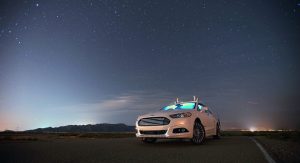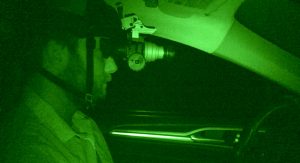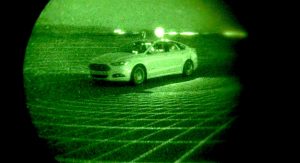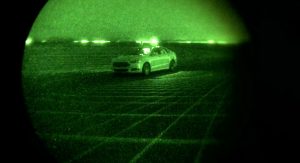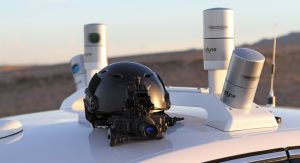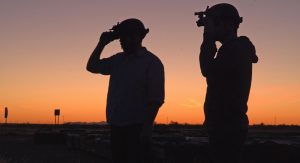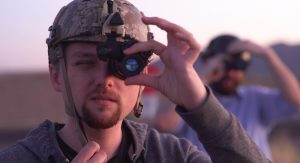As part of LiDAR sensor development, Ford tests Fusion Hybrid autonomous research vehicles at night in an attempt to demonstrate the vehicle’s capabilities to perform beyond the limits of human drivers.
After giving us some insights about their self-driving Fusion Hybrids during winter conditions, the American car manufacturer took it to the next level at their Arizona proving grounds. There, using only its powerful LiDAR system (which works with the car’s virtual driver software) the autonomous Fusion navigated itself flawlessly – or so Ford says – in complete darkness.
Albeit Ford says the it’s ideal to have all three modes of sensors active – radar, cameras, and LiDAR – the latter can function independently on roads without stoplights; or any kind of light, for that matter.
“Thanks to LiDAR, the test cars aren’t reliant on the sun shining, nor cameras detecting painted white lines on the asphalt. In fact, LiDAR allows autonomous cars to drive just as well in the dark as they do in the light of day”, says Jim McBride Ford technical leader for autonomous vehicles.
That’s because Ford’s self-driving cars use high-resolution 3D maps, complete with information about the roads, road-markings, geography, topography and landmarks like signs, buildings and trees. Furthermore, the vehicles use LiDAR pulses to accurately pinpoint itself on the map in real time, while the radar and cameras provide additional information to the system.
Using night vision goggles, Ford engineers were able to monitor the LiDAR inside and outside the vehicle, allowing them to see the grid of infrared laser beams projected around the vehicle as it drove past.
“Inside the car, I could feel it moving, but when I looked out the window, I only saw darkness. As I rode in the back seat, I was following the car’s progression in real time using computer monitoring. Sure enough, it stayed precisely on track along those winding roads”, describes Wayne Williams, a Ford research scientist and engineer.



![Ford’s Autonomous Fusion Uses Lidar Sensor To See In The Dark [w/Video]](https://www.carscoops.com/wp-content/uploads/2016/04/Cover-photo.jpg)
